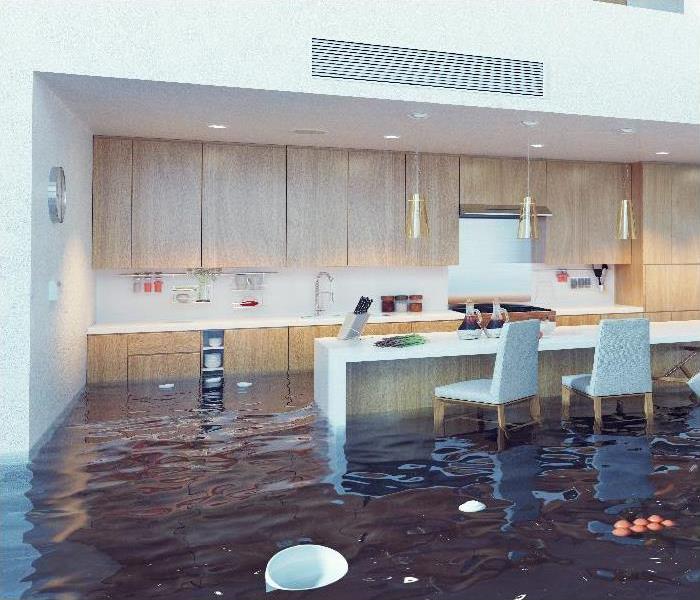Is It Realistic to Hope My Family and I Can Return to Live in Our Flood Damaged Charlestown Home Again?
5/23/2020 (Permalink)
 SERVPRO of Washington County commits itself to rapid professional recovery from flooding and other catastrophes for the members of our community.
SERVPRO of Washington County commits itself to rapid professional recovery from flooding and other catastrophes for the members of our community.
Call in the Experts -- Your Local SERVPRO Is Well-Trained and Equipped to Restore Flood Damage in Your Charlestown Residence
The key to returning to your Charlestown home after a disaster like a flood is to engage the services of a reputable recovery company, skilled and certified in multiple mitigation and remediation specialties. The path back to your normal life might have some twists and turns, and you need a restoration firm that has broad experience, top-notch training, and cutting-edge equipment, as well as a successful track record.
What Are the Boxes You Need to Tick When Choosing a Flooding Response Team?
Charlestown flood damage related to storms can include saltwater involvement, from storm surge or salt ponds within the municipal boundaries. As climate changes, we have seen more frequent severe multi-day rainstorms per authorities. Average single day flooding events in the state average 15 and peaked at 22 in 2018. Annual precipitation has increased a foot in the last century. The risks are sobering and increasing. When flooding strikes your home you require:
• A local company, with a rapid and scalable response for your current emergency and available in the future for questions or new concerns
• Technicians familiar with the complications of a saltwater surge, and the unique dam it can do to wood, concrete, and metals
• A one-stop resource for water removal, structural drying, and attention to secondary damage
• Help with insurance claims and the precise needs of contents also suffering the effects of flooding.
• The opportunity to obtain wrap-around restoration services to repair and rebuild storm damage and address controlled demolition
Can You Get All of the Services Necessary from Our Team?
With more than 15 years in the restoration and construction business, SERVPRO checks out on all you require. Our managers and technicians earn multiple certifications from the Institute of Inspection Cleaning and Restoration Certification (IICRC), the international restoration standards-setting organization. We lead as restoration experts by example, all in for events such as the Rhode Island and Massachusetts Floods (2010), Hurricane Irene (2011), Hurricane Sandy (2012), and Hurricane Irma (2017). Our team answered the call for help in other natural disasters across the nation, helping out our nationwide disaster recovery affiliates on dozens of occasions.
What Do We Offer Residential Victims of Flood Damage?
Our service vehicles arrive stocked with water removal, cleaning, disinfecting, and drying essentials and more, ready to scope out the damage specific to your situation. Although similarities abound among flood damage projects, our project manager must inspect and assess your home, ensuring we craft a recovery plan that is as unique as your circumstances. Once safety considerations are noted and accommodations made, we begin the water removal phase:
• We shovel silt and debris to ease the load of solid contaminants on the extraction equipment.
• If the flood fluids contain saltwater, we consider the need for fresh water flushing to prevent the delignification of wood building materials, save concrete from long-term damage, and avoid corrosion of metals.
• Water deeper than two inches pumps out, with submersible units set up and repositioned as needed.
• Truck-mounted extractors then take over, pulling water from flat surfaces -- extension attachments and portable extractors can access water in recesses and other confined spaces.
• Cleaning and disinfecting with EPA-registered products ready the surfaces and space for drying.
• Moisture detection and measurement provide data for drying goals and a baseline against which to gauge the drying progress.
What Can You Expect During Structural Drying?
• Our trained technicians calculate the number of air movers needed for circulation, placing them at appropriate angles.
• The temperature of the space must be established and then monitored -- warm air can accept more of the water evaporated from wet structures.
• We position dehumidifiers to absorb the water vapor best and use the exhaust of warm, dry air to facilitate the work of the air movers and heaters.
• Water contained in the dehumidifier is discarded.
What About Damaged Contents?
In some cases, we pack-out furnishings, household goods, and personal possessions before water removal. We might stage the items in a dry, secure place within your property. Our production facility also can be a place where we evaluate, clean, dry, disinfect, and deodorize items, storing them until the house is ready to move in. We track the contents using our Contents Claim Inventory Service (CCIS), using a combination of lists, digital photos, and barcoding to keep your property safe and prepared for pack-back.
When disaster strikes, who will you rely upon for help? SERVPRO of Washington County commits itself to rapid professional recovery from flooding and other catastrophes for the members of our community. Call us at (401) 315-2337 for a speedy assessment and efficient and effective restoration plan.






 24/7 Emergency Service
24/7 Emergency Service